
[168] Haematopus ostralegus, Oystercatcher
Introduction
Haematopus ostralegus, the Oystercatcher, is a relatively large, common wading bird, easily recognisable by its long orange bill.
We should really call it the Eurasian Oystercatcher, Common Pied Oystercatcher or Palearctic Oystercatcher, to distinguish it from a few other geographically separated species of Haematopus.
Taxonomy
Kingdom – Animals
Phylum – Chordates
Class – Aves (birds)
Order – Charadriformes (Sea Birds and Waders)
Suborder – Charadrii (Plover-like waders)
Family – Haematopodidae (Just one genus)
Genus – Haematopus (Oystercatchers)
Scientific Name – Haematopus ostralegus
Name
Oystercatcher comes from the American species, described as eating oysters, and it replaced its older name Sea Pie. (Pie means black and white as in [265] Magpie and [231] Pied Wagtail.)
The scientific name comes from Latinized Greek haima-pous meaning blood-foot, and Latin ostrea-legere meaning oyster-pick.
Description
Birds found in Europe come from the subspecies Haematopus ostralegus ostragegus, with two other geographically separate subspecies.
Apart from its long bright orange bill, Oystercatchers also have an orange eye and vivid pink legs and feet. The body is black on top and white underneath.
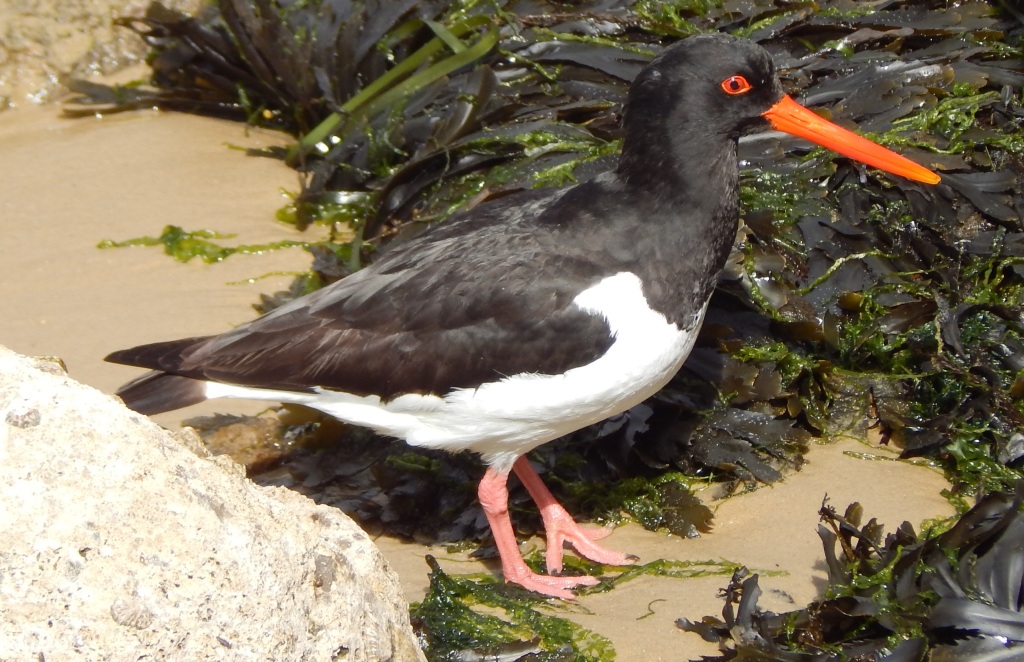
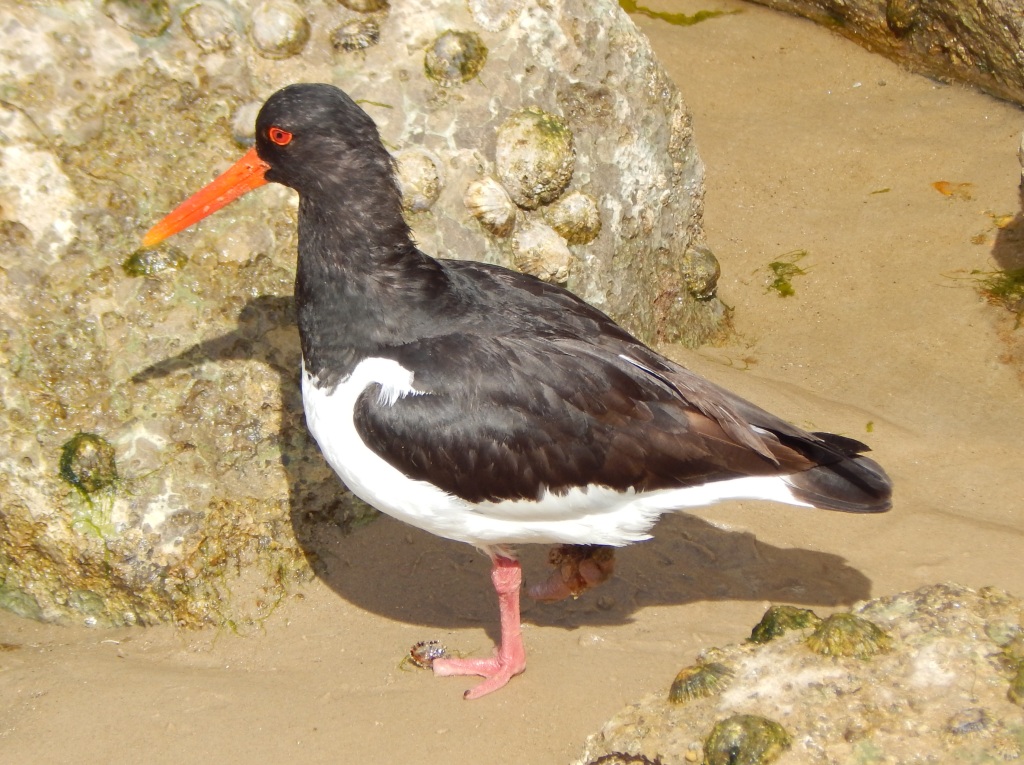
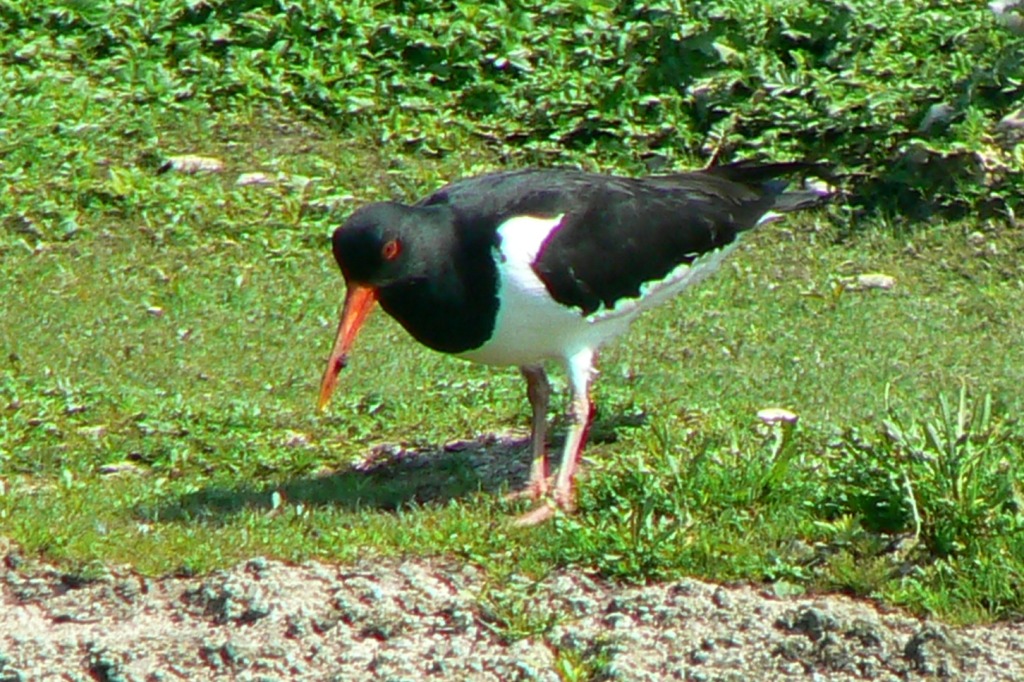
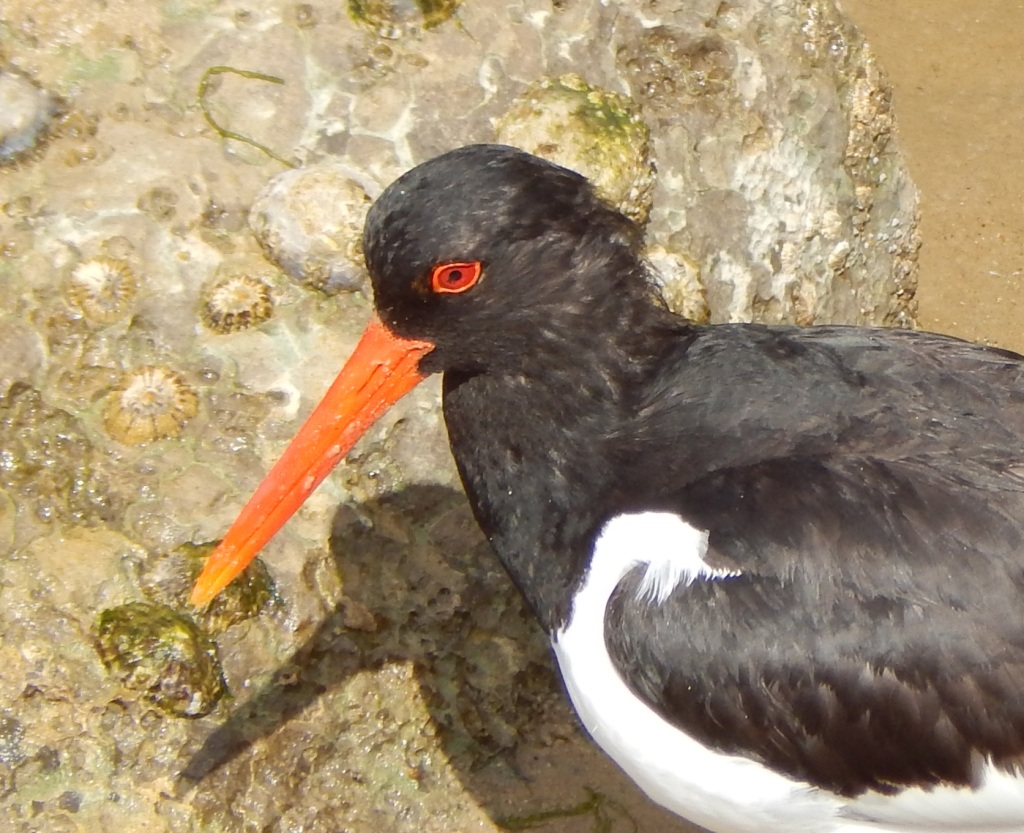


They don’t just eat oysters. Depending on location they may eat bivalves (including mussels and oysters,) gastropods, limpets, echinoderms (starfish and sea urchins,) fish and crabs. Inlands they mainly eat worms and insect larvae.
Their distinctive piping call is easy to note in flight.
Habitat
Haematopus ostralegus can be found all year around the coasts of the UK and the southern coasts of the North Sea and English Channel. There are also migratory populations. Breeding areas include inland wetlands in Britain, Scandinavian coasts, central Eurasia and the Far East. Wintering ranges include the North east coasts of the Atlantic Ocean and Indian Ocean coastal areas.
In Britain many birds breed in the North and winter in the South.
(Other species of Haematopus come from America, Australasia and South Africa.)
Other Notes
You may notice in one of my pictures a bird with only one foot. I have seen birds from several species manage to survive like this, as long as they can fly when necessary.
See also
There are many other species of wading birds found in the UK but none of them are very similar to the Oystercatcher.
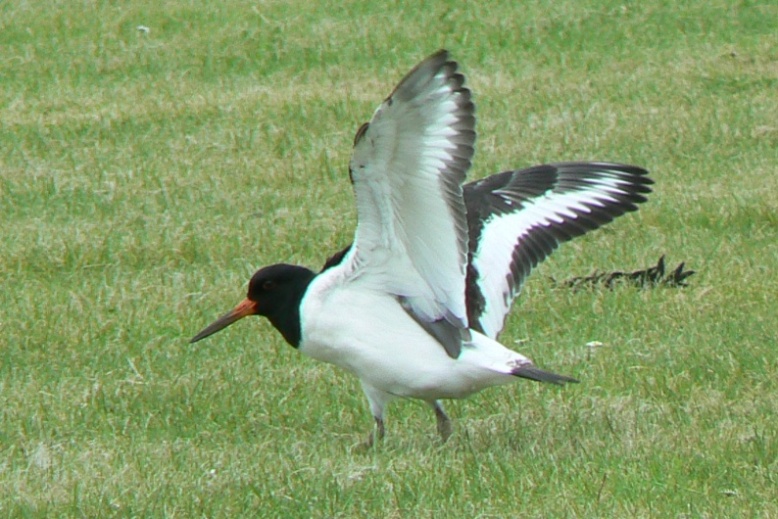

Pingback: [354] Vanellus vanellus, Lapwing | The Species of Britain